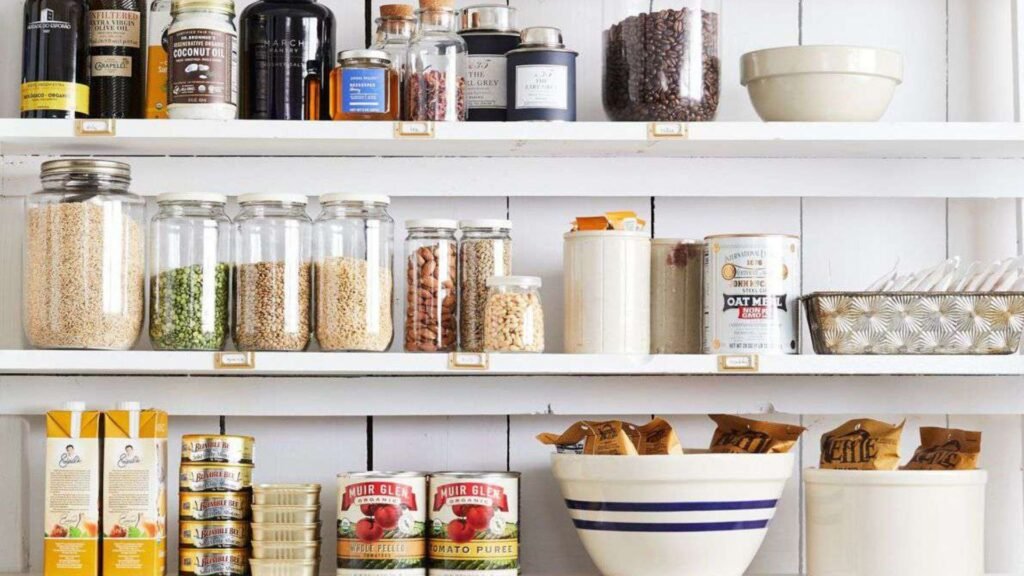Essential Tips for Pantry Cabinet Organization
- By -Tonny Jack
- Posted on
- Posted in Cabinets
Organizing your pantry cabinet is more than just a visual upgrade—it enhances functionality, saves time, and even reduces food waste. With a systematic approach, you can transform your pantry into a space that works for you. Whether you have a small cabinet or a walk-in pantry, these tips will help you maximize storage and maintain a neat, accessible setup.

Start with a Clean Slate
The first step in pantry organization is to empty it completely. Take everything out, and carefully inspect each item. Check for expired products or items you no longer use, and discard them. This decluttering phase gives you a fresh start. Once the shelves are empty, clean them thoroughly using a damp cloth and mild detergent. A clean and sanitized space makes the perfect foundation for an organized pantry.
Sort and Categorize Items
Group similar items together based on their category. For instance, place all baking supplies, canned goods, snacks, and spices in separate groups. For larger families, you might create zones based on meals—breakfast essentials, dinner ingredients, and snack items. Sorting items ensures that everything has a designated spot, making it easier to find what you need when cooking or meal planning.
Invest in Clear, Airtight Containers
Dry goods like flour, sugar, pasta, and rice are best stored in clear, airtight containers. These containers not only keep your food fresh but also allow you to see what’s inside at a glance. Stackable designs save space, and uniform containers give your pantry a polished and cohesive look. Use labels on each container to avoid confusion and keep everything in its place.
Maximize Vertical Space
Many pantry cabinets have underutilized vertical space. Add tiered shelves, stackable racks, or adjustable shelf inserts to make the most of the available height. These tools help you store more items efficiently without cluttering the shelves. Consider using risers for canned goods or lazy Susans for spices to keep everything accessible and visible.
Use Baskets and Bins for Small Items
Loose or small items can easily create chaos in a pantry. Baskets and bins are perfect for storing these, whether it’s snacks, seasoning packets, or kids’ lunch supplies. Choose containers that fit your pantry dimensions and assign a purpose to each one. Label the bins for added convenience, ensuring that every member of the household knows where to find or return items.
Leverage Door Storage
The inside of your pantry cabinet doors offers additional storage opportunities. Install narrow shelves, hooks, or over-the-door organizers to store lightweight items like spices, small jars, or wraps. This creative use of space helps free up shelves and keeps frequently used items within easy reach.
Rotate Stock Regularly
To avoid waste, rotate your pantry stock every time you shop. Place older items at the front and new items at the back. This practice ensures that older products are used before they expire. Make it a habit to check your pantry for nearly expired goods weekly, so you can plan meals around them.
Create a Handy Shopping List Zone
Mount a small whiteboard or hang a notepad on the inside of your pantry door. This shopping list zone helps you keep track of items you’re running low on. Simply jot down what you need as you notice it. When it’s time for a grocery run, your list will already be prepared, saving time and effort.
Maintain the System
Organization is not a one-time task; it requires regular upkeep. Dedicate a few minutes each week to tidy up the shelves, return misplaced items to their zones, and wipe down surfaces if needed. Small, consistent efforts will keep your pantry functional and looking great for years to come.
Conclusion
A well-organized pantry cabinet is a game-changer for your kitchen. By following these essential tips, you can maximize storage, maintain order, and make meal prep stress-free. With some thoughtful planning and a commitment to maintaining the system, your pantry can become an inspiring and efficient part of your home.



